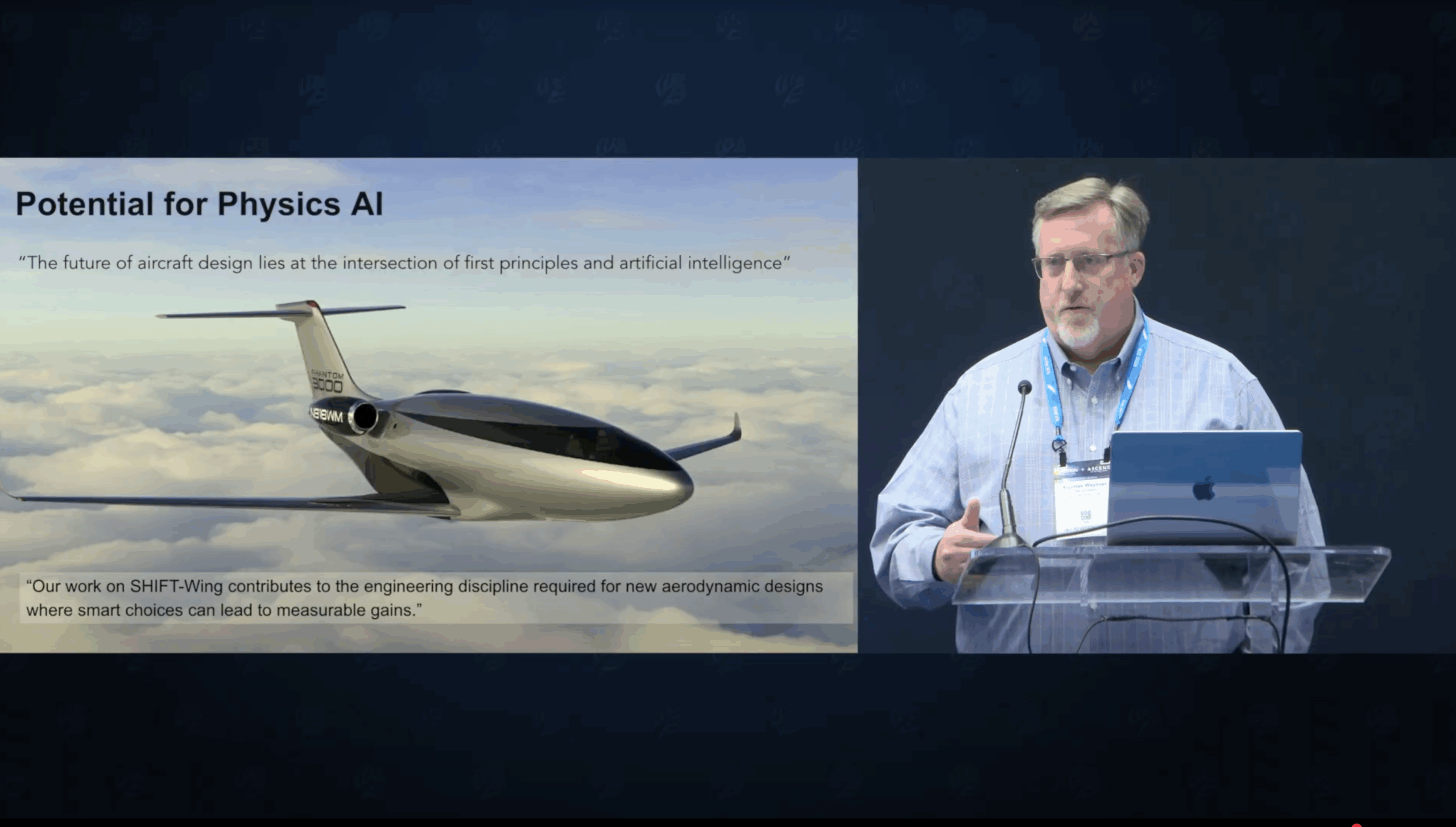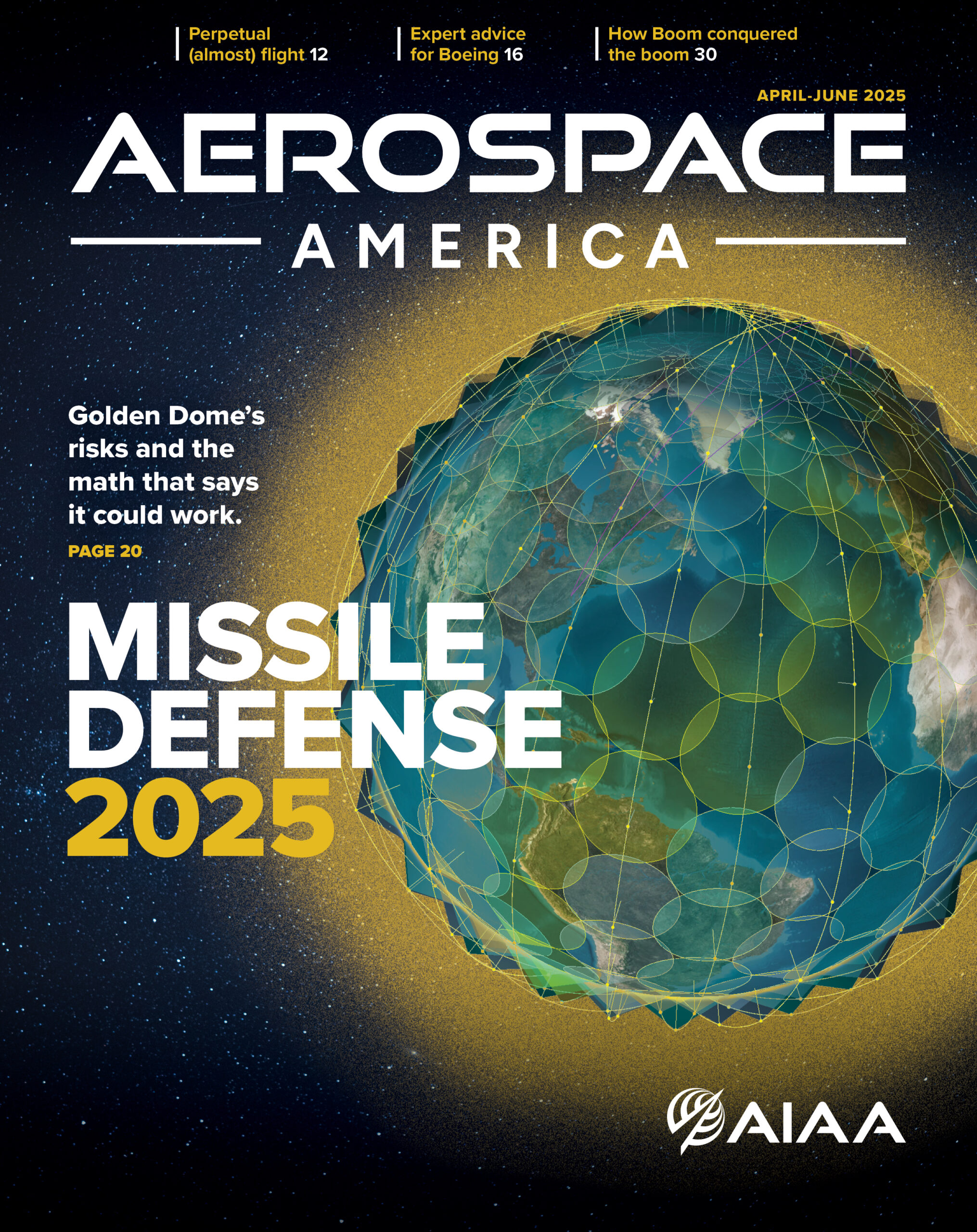Incorporating physics into artificial intelligence (AI) models for simulation will help rewrite how to design aerospace systems, noted Juan Alonso, Chief Technology Officer and Cofounder of Luminary Cloud and Chair of the Department of Aeronautics and Astronautics at Stanford University. In a far-reaching and intriguing presentation, Alonso described the Physics AI revolution in an AIAA Aerospace Perspective Series webinar in August, as well as on the Hub stage at AIAA AVIATION Forum and ASCEND in July.
Three game-changers have converged to rewrite the rules, Alonso argued:
- The GPU-computing revolution has made simulation faster than ever
- Cloud-native software practices, such as scalable APIs (application programming interfaces), vast storage, and on-demand computing, have unlocked data at an industrial scale
- Physics-based AI models promise to blend machine learning with scientific laws for both speed and fidelity
Combining all three, Alonso said, can fundamentally rework how simulation drives design. The real payoff emerges when you combine them into a simulation platform that can spin up tens of thousands of runs, automatically ingest results, and train surrogate models that respect the underlying physics, he added.
Physics-based AI provides valuable information: it embeds symmetries, invariants, and conservation laws directly into machine-learning architectures. That means less training data is required to reach a given accuracy, more accurate predictions are possible, and the resulting model generalizes far better on designs it hasn’t seen before. These models predict full surface and volume fields — pressure, shear stress, and velocity — so that detailed flow physics can be constructed in milliseconds instead of hours or days, Alonso explained.
During its July AIAA AVIATION Forum / ASCEND Hub session, Luminary demonstrated physics-aided AI design with the announcement of its first public data set and model called Shift Wing, developed with Otto Aviation and NVIDIA. The amazingly accurate Shift Wing covers transonic wing design, with more than 3,000 simulations (and counting). Shift Wing allows engineers to instantly visualize and assess complex phenomena, such as shock impingement, Alonso noted. The data — and a pre-trained physics-AI model — are available for non-commercial use on Hugging Face, so engineers can jump-start their own design studies.
Obi Ndu, Chief Information Officer and Digital Officer at Otto Aviation, provided a compelling user’s perspective. He showcased how Otto Aviation is leveraging Luminary’s technology to build a “virtual twin” of its aircraft and operations. This allows for optimized design decisions, rapid iteration on concepts, and the integration of wind tunnel and flight test data into proprietary AI models. Otto’s mission: to unlock the physics of laminar flow for increased range and performance.
During the Hub stage presentation, Tom Wayman, Otto Aviation’s technical fellow, described this laminar-flow business jet, called Phantom, that relies on high-fidelity aerodynamic predictions to minimize drag, fuel burn, and structural weight — with lower operating costs — all critical for a 3,500-nautical-mile range business jet.
Wayman described physics-AI models as integral to a “virtuous cycle” of rapid design iterations, optimization loops, and real-time analysis that will accelerate concept exploration and bridge theory with machine learning.
During the Hub session, Alonso, Ndu, and Wayman acknowledged that physics AI won’t solve every fluid-dynamics challenge, but backed by robust data, it can deliver near-instant accuracy and unlock design spaces previously too expensive to explore. Shift Wing is just the start – the (wing) tip of this revolution.




